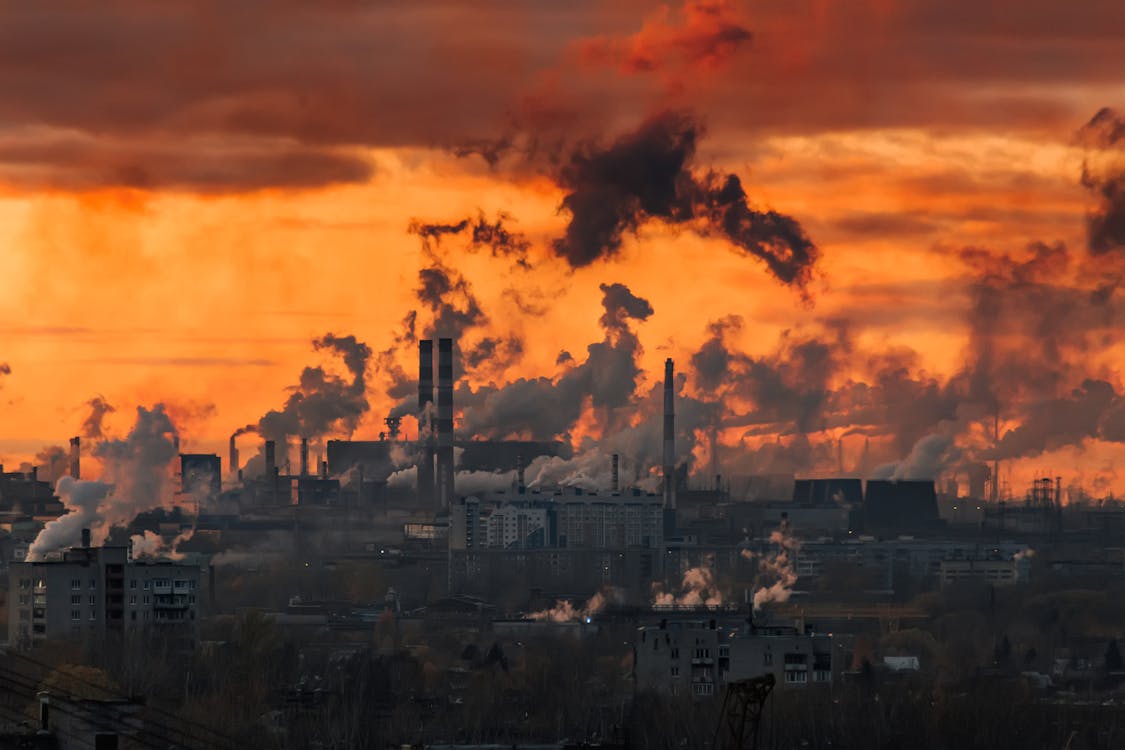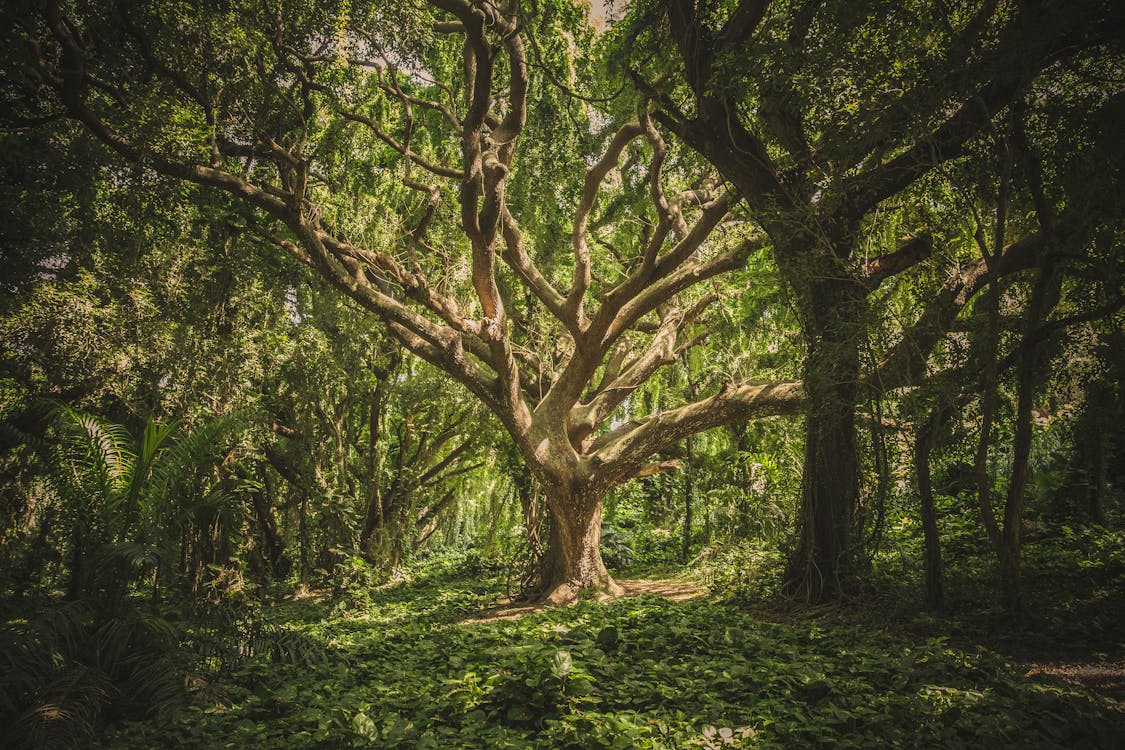
Wood vs. Plastic: Is Natural Material the Key to a Sustainable Future?
Share
Introduction:
 Everything is made of stuff—but not all stuff is created equal. In recent years, there's been a noticeable shift away from plastic toward more natural materials, like wood, as we strive to make more sustainable choices. But is this really the right move? Is wood really the better alternative to plastic, or is it just the lesser of two evils?
Everything is made of stuff—but not all stuff is created equal. In recent years, there's been a noticeable shift away from plastic toward more natural materials, like wood, as we strive to make more sustainable choices. But is this really the right move? Is wood really the better alternative to plastic, or is it just the lesser of two evils?
In this post, I’ll break down the key factors to consider when choosing between wood and plastic, from renewability and biodegradability to energy consumption and the chemicals involved in production. By the end, you'll have a clearer idea of whether moving toward wood-based products is a step forward in creating a more sustainable future—or if we need to rethink the whole debate.
Renewability: The Power of Nature vs. Finite Resources
When it comes to sustainability, renewability is one of the most important factors to consider. A renewable resource is one that can regenerate naturally and replenish itself without human intervention. In contrast, non-renewable resources, like petroleum (used to make plastic), are finite—once they’re gone, they’re gone for good.
Wood is renewable. We can plant more trees to replace the ones that are harvested, and forests can regenerate over time. But only if we manage them responsibly. Deforestation and overharvesting can quickly tip the scales, meaning that, even though wood is technically renewable, it’s not immune to mismanagement.
Plastic, on the other hand, comes from crude oil, a non-renewable resource that’s being consumed far faster than it can regenerate. In fact, some estimates suggest that by 2052, the oil reserves necessary to make plastic could be depleted.
Did you know?
- By 2052, we might run out of oil for plastic production.
- Only 9% of plastic produced is ever recycled.
Wood, when sourced sustainably, can be a much better alternative to plastic, as long as we take care to harvest it responsibly and don’t waste it on disposable, low-use items like plastic bags.
Biodegradability: Breaking Down the Impact

When materials break down in nature, we often say they are biodegradable. This means that microorganisms, such as fungi and bacteria, break them down into harmless substances, leaving little to no environmental impact.
Wood, in most cases, biodegrades easily. After it serves its purpose, it returns to the soil, enriching it and fueling the growth of new plants. This natural cycle is one of the reasons wood is considered a more sustainable choice than plastic.
Plastic, however, is a different story. It doesn’t biodegrade easily. Instead, it breaks into smaller pieces over time, creating microplastics that persist in the environment, poisoning wildlife and entering the food chain.
Did you know?
- Nearly everyone has toxic microplastics in their bodies.
- 79% of plastic waste ends up in landfills.
- Landfills take up about 18,000 km² of land globally.
Biodegradable wood doesn’t just disappear—it integrates back into the ecosystem, supporting life rather than contaminating it.
The Carbon Sink: Wood vs. Plastic in the Fight Against Climate Change

One of the most exciting things about wood is its ability to act as a carbon sink. Trees absorb carbon dioxide (CO2) from the atmosphere during photosynthesis and store it in their trunks and roots. When trees are harvested and used sustainably, that carbon remains locked in the wood until it decays or is burned. Even then, new plants continue to absorb CO2 from the atmosphere, creating a closed-loop system that actually reduces the overall carbon in the air.
In contrast, the production of plastic contributes significantly to greenhouse gas emissions. Not only does plastic production use vast amounts of energy (much of it derived from fossil fuels), but the petroleum extraction process also releases harmful gases like methane and benzene into the atmosphere.
Did you know?
- An average hardwood tree absorbs about 1 ton of CO2 during its lifetime.
- Forests store 80% of the world's carbon above ground.
- The more CO2 there is in the atmosphere, the more CO2 trees absorb.
If we shift to responsibly sourced wood, we’re essentially investing in a material that helps pull carbon out of the air, contributing to efforts to combat climate change.
Energy Use: Producing Plastic Takes More Than You Think

The energy required to produce plastic is shockingly high. The process of refining crude oil, extracting the necessary hydrocarbons, and transforming them into plastic requires enormous amounts of energy. And much of that energy is still derived from fossil fuels.
In fact, the amount of energy needed to produce plastic is often greater than the energy used to produce materials like wood, which is far less energy-intensive to process. In countries like the UK, where 41% of power still comes from fossil fuels, the production of plastic directly contributes to CO2 emissions.
Did you know?
- The energy required to make plastic is 3 times greater than the energy needed to make steel.
- The petrochemical industry consumes 20% of all energy produced on Earth.
By using wood instead of plastic, we can significantly reduce the energy consumption associated with manufacturing products, lowering our overall carbon footprint.
Toxic Chemicals: Plastics Are Not Just Bad for the Environment, They're Bad for Our Health Too

Plastic production involves a number of hazardous chemicals. For instance, fracking for oil releases benzene, xylene, and methane, all of which are toxic to both the environment and human health. When plastics are burned, they release dioxins, furans, mercury, and other dangerous substances into the air—posing significant risks to life and the planet.
Wood, by contrast, doesn’t release toxic chemicals during production or decomposition. It’s a safer material from an environmental and health perspective.
Wood: A Sustainable Choice—But Only If Done Responsibly

Wood isn’t a perfect solution. As with any material, there are pitfalls if it’s not sourced responsibly. For instance:
- Illegal logging: Companies harvesting wood without proper permits can destroy critical ecosystems, including rainforests and wildlife habitats.
- Clearcutting: If trees aren’t replanted or managed, this can lead to deforestation and biodiversity loss.
- Exotic hardwoods: Some hardwoods, like ebony, take decades to grow and are now endangered. Using these materials irresponsibly is unethical and unsustainable.
- Air miles: Transporting wood across long distances produces significant CO2 emissions.
It’s essential to choose wood that is sourced from well-managed forests, ideally locally, to ensure that we’re not exacerbating these issues.
Conclusion: Embracing Sustainable Wood Over Plastic
In conclusion, wood offers many benefits over plastic, especially when it’s responsibly sourced. It’s renewable, biodegradable, carbon-negative, and requires less energy to produce. However, it’s crucial that we use it sustainably—by avoiding practices like illegal logging, clearcutting, and overharvesting—and prioritize local, ethically sourced wood.
As we look to the future, I believe there’s a great opportunity for wood to replace plastic in many areas of our lives. If you're considering making more sustainable choices, start with something as simple as swapping out plastic for a beautifully crafted wooden phone or laptop stand. Not only does it look great, but it’s a step towards a greener planet, too.
Check out my sustainable oak products here!
By making conscious decisions to use responsibly sourced wood instead of plastic, we can contribute to a healthier planet and a more sustainable future—for everyone.
